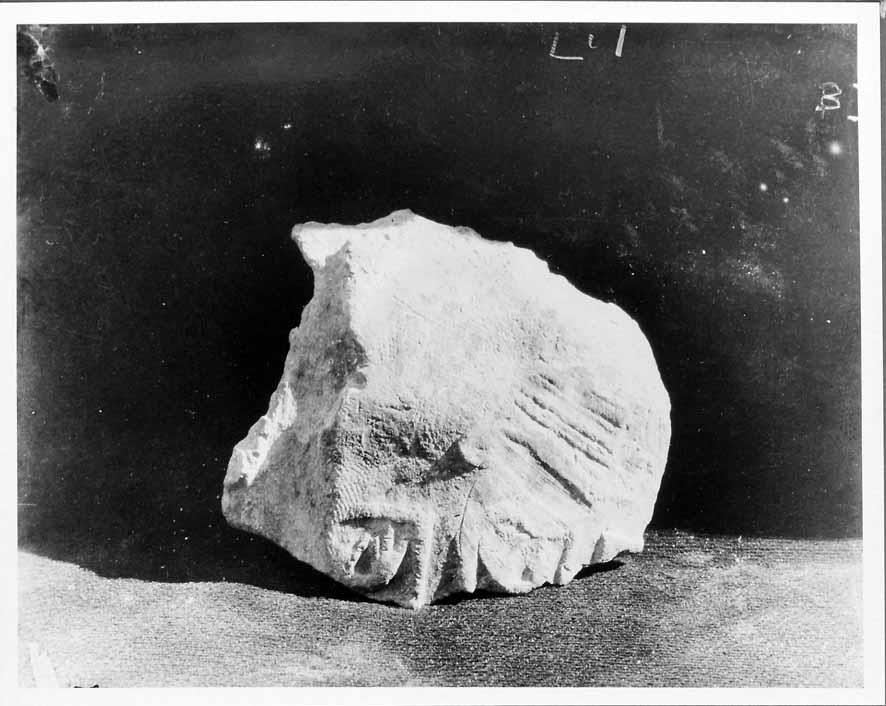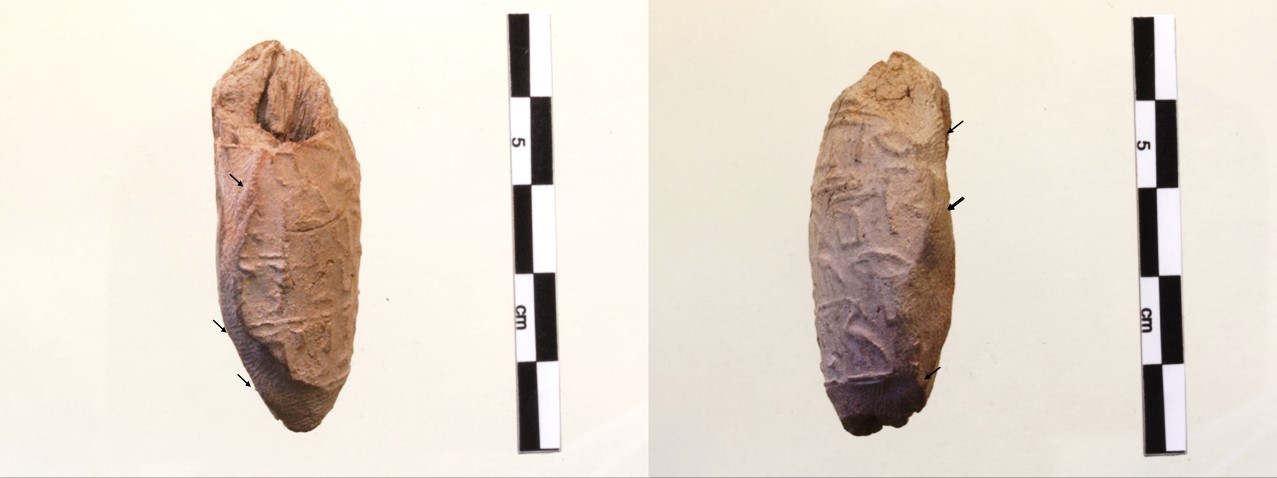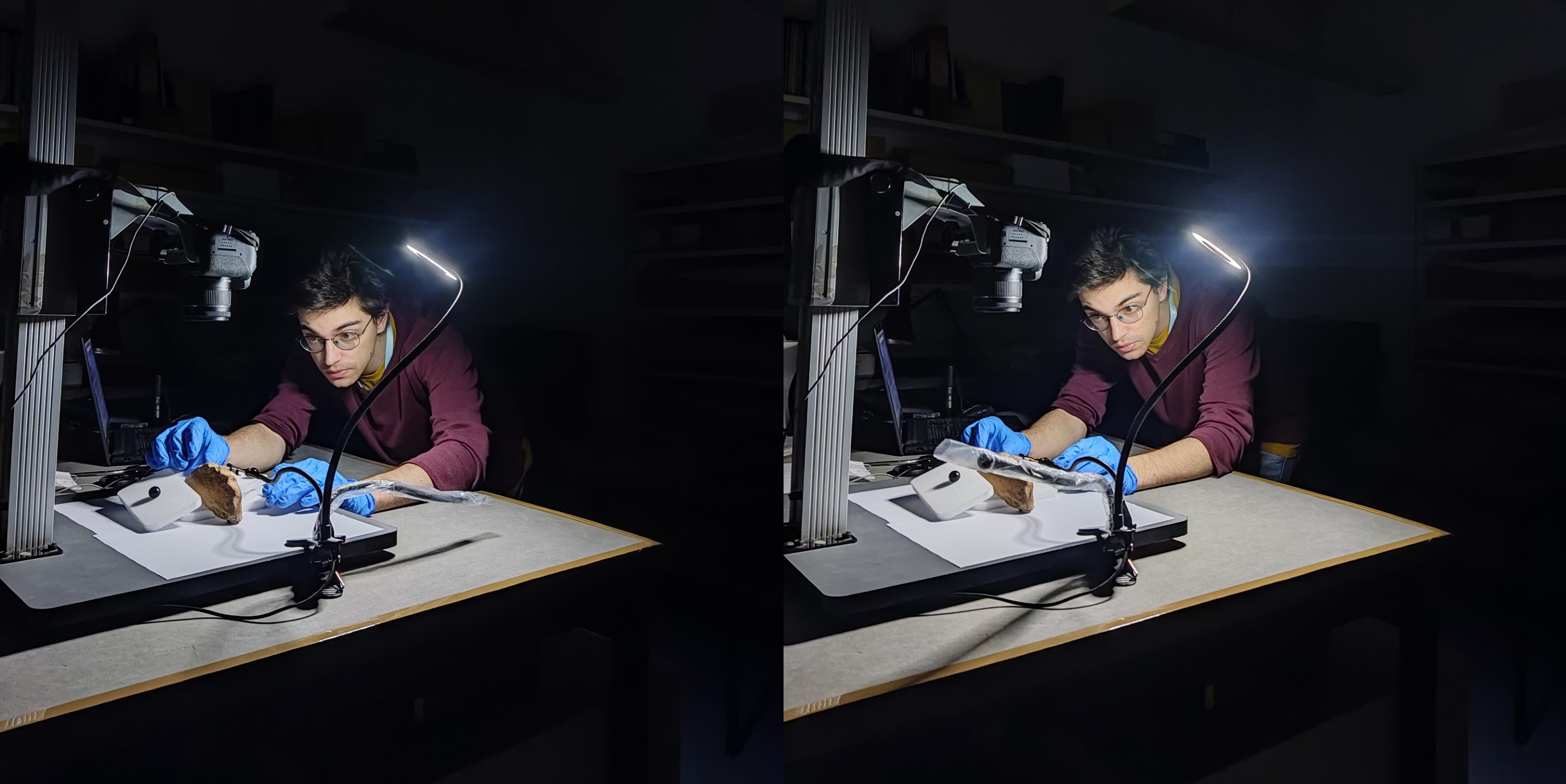Handling bureaucracy
The identity of Egyptian administration as seen through fingerprint analysis in sealings from the Early Dynastic Period
(Centenary Award). Project Director: Pablo Barba (University College London)
During the last decade, fingerprint analysis has gained relevance in archaeological studies. As the human body grows, so does the distance between the ridges in any fingerprint. This correlation provides a valuable window for archaeologists to study the age and sex of fingerprints left in soft materials, such as clay. Previous research has already shown the potential of fingerprint analysis of ceramics and figurines: this project joins this wave of research to expand the analytical and interpretative possibilities of this methodology through the study of sealings.

A sealing impressed with a band with the name of king Ka from his tomb in Umm el-Qa’ab, Abydos. To the left, on top of the king’s name, a fingerprint left by the seal owner. Published in Petrie’s The royal tombs of the earliest dynasties, part II (plate II, no. 1). Courtesy of the Egyptian Exploration Society.
Despite the relevance that seals (and sealings) had in the past, and have had to the development of Egyptology, many uncertainties remain regarding their ownership and usage: Were they tied to an individual, or were they passed on and inherited through generations? Who was behind sealing and related administrative practices? Egyptian sources and iconography tend to depict a male-dominated bureaucracy: were then women and children excluded from such practices? The study of fingerprints in sealings helps address some of these questions, through the reconstruction of not only the age and gender of the seal user, but also their individuality: much like in any TV police series, complete fingerprints can be linked to specific individuals.

An Old Kingdom sealing found in Hierakonpolis, between the enclosure walls of the temple, by F. Green’s team in Hierakonpolis in 1898. The arrows indicate visible fingerprints. Courtesy of the Museum of Anthropology and Archaeology, Cambridge.
The project will tackle these issues through sealings from the Early Dynastic and Early Old Kingdom periods uncovered in the town site of Hierakonpolis and in the royal cemetery of Umm el-Qa’ab, Abydos. A sizeable collection of sealings uncovered there under the direction of F. Green and F. Petrie, respectively, made their way to the UK, and are currently housed in the Museum of Archaeology and Anthropology (Cambridge) and in the Petrie Museum of Egyptian and Sudanese Archaeology (London). Through a comparative analysis of materials from these two sites currently in both collections, this project can explore whether there were any differences in the demographic composition of seal owners and users in the Egyptian landscape at the onset of the state.

Practicing the recording of fingerprints with a 4th millennium BC wavy handle in the laboratories of the Institute of Archaeology, UCL.
Thanks to the help of the EES Centenary Award, this project will be able to travel to the collections in Cambridge and London to record and analyse the fingerprints in sealings from Abydos and Hierakonpolis. Furthermore, the funding will provide resources and space to prepare workshops for the general public on sealing practices in Ancient Egypt. Bureaucracy might not sound like the most exciting aspect of the Egyptian past; however, the project will organise several workshops for children and adults recreating administrative practices, to offer participants hands-on experience on this fundamental aspect of Egyptian daily life. The clay with the fingerprints from the participants in these sessions will be used to improve the research models for analysing and reconstructing the age and sex of archaeological fingerprints. That way, the wider audience will not only have the chance to learn about sealing practices through these workshops, but also to actively participate in the research process and knowledge creation.
